Today we’re starting a new series about Spanish Theme Park History. This eight part series will be released bi-weekly. Come back every other week for another article! We’ll be covering the history of thirteen Spanish amusement and theme parks. Some of them no longer exist and others are still operating and receiving guests. In this series, we’ll travel through 168 years of theme park history, starting in 1853, to our days in 2021. Today we’ll focus on Camps Elisis, the first Spanish amusement park.
– In the past, many of our images have been posted, featured, and shared on forums, social media platforms and websites around the web. We work hard to provide the coverage that we do, and we encourage our audience to share our content and use our images, BUT ONLY IF proper credit is given to thecoasterkings.com. Thank you! –
Spain has around twenty theme and amusement parks, the most internationally known are PortAventura, Parque Warner, and Tibidabo. In Spain there is a theme or amusement park for approximately every 2,4 million inhabitants. Compared to other European countries, theme and amusement parks in Spain have a lower weight in society, for example, in the Netherlands has one park for approximately every 0,5 million inhabitants and France has one park for approximately every 1,3 million inhabitants. Outside of Europe, the United State has one park for approximately every 0,8 million inhabitants. There is a direct correlation between the number of parks for inhabitants and the economy (Gross Domestic Product per capita) of each country. However, the total number of Spanish parks has been higher in some historical moments during the 19th and 20th centuries. (These are approximate data, and may not be 100% accurate).
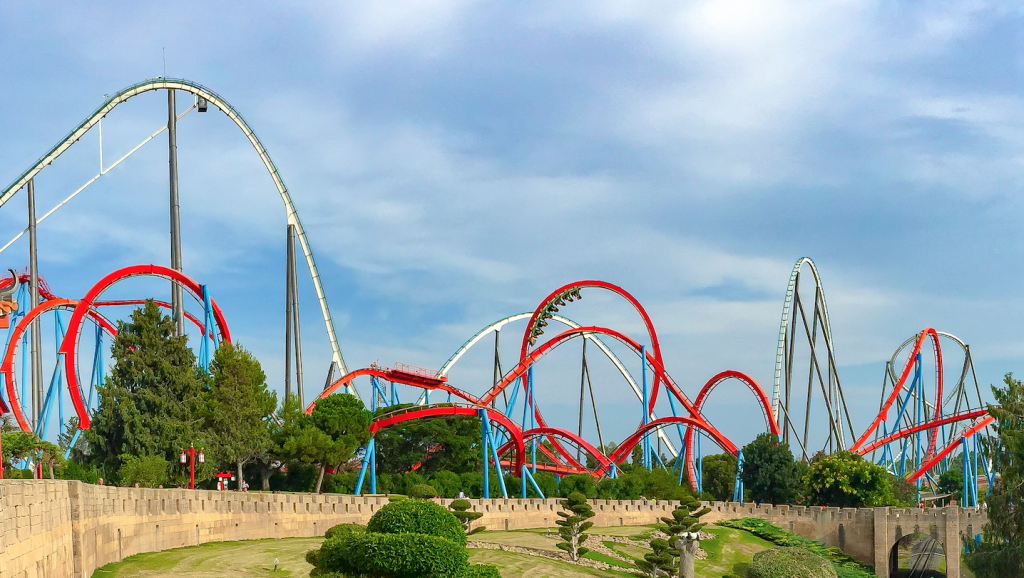
Source: European Coaster Kings
In this series we’ll visit some of Spain’s most known cities, like Barcelona, Madrid, Benidorm, Seville, Toledo or Salou and we’ll also discover other less known (but also great) cities such as Zaragoza, Donostia or Cercs. Note that while we’ve tried to objectively select the most historically relevant Spanish parks we cannot mention all of them. We’ll explore some of the most historic amusement parks on the planet still operating today and other parks that are interesting because they are very closely related to great companies in this industry, like Anheuser-Busch, Universal, Six Flags or even Disney. We hope you enjoy this journey with us, discovering places full of magical experiences, great adventures, amazing sights, funny attractions and, of course, lots of history.
Camps Elisis (1853-1872)
The history of theme parks in Spain begins back in 1853 in Barcelona. The Industrial Revolution that occurred in the United Kingdom during the 18th century was exported to the Catalan region of Spain along with a sustained increase in the GDP per capita and new lifestyles never seen before. In the area of Barcelona, various textile factories were built but, at that time period, the city of Barcelona was completely walled, which didn’t allow the city to grow. In 1853, the Barcelona City Council approved a project for the demolition of the walls which, apart from the growth of the city and its industry, led to the construction of the first Spanish amusement park.
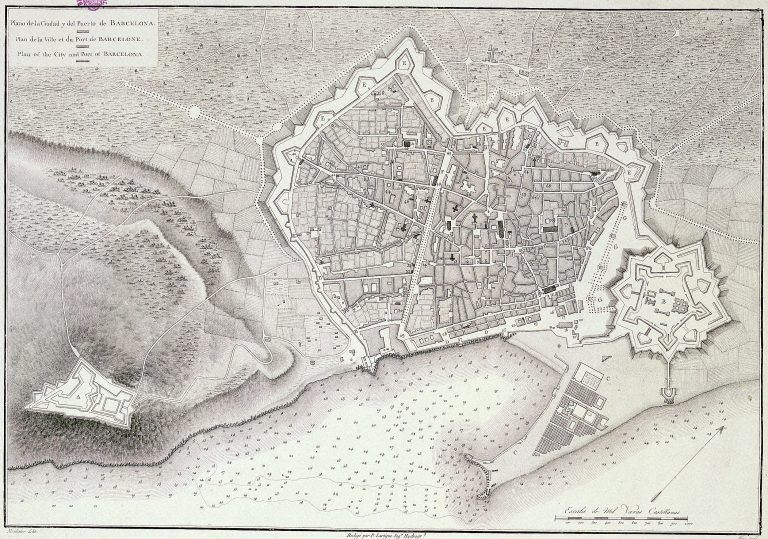
Source: https://medipiratas.wordpress.com/2015/02/26/el-puerto-de-barcelona-en-la-edad-moderna/
Outside the city walls, there was a path that connected Barcelona with the village of Gracia, an outlying district of the city. Between 1821 and 1826 improvement works were carried out on the path to turn it into a road for carriages and pedestrians: the Passeig de Gràcia. In 1843 the promenade was illuminated, and some recreational venues and establishments opened next to it including Jardins Tivoli (Tivoli Gardens).
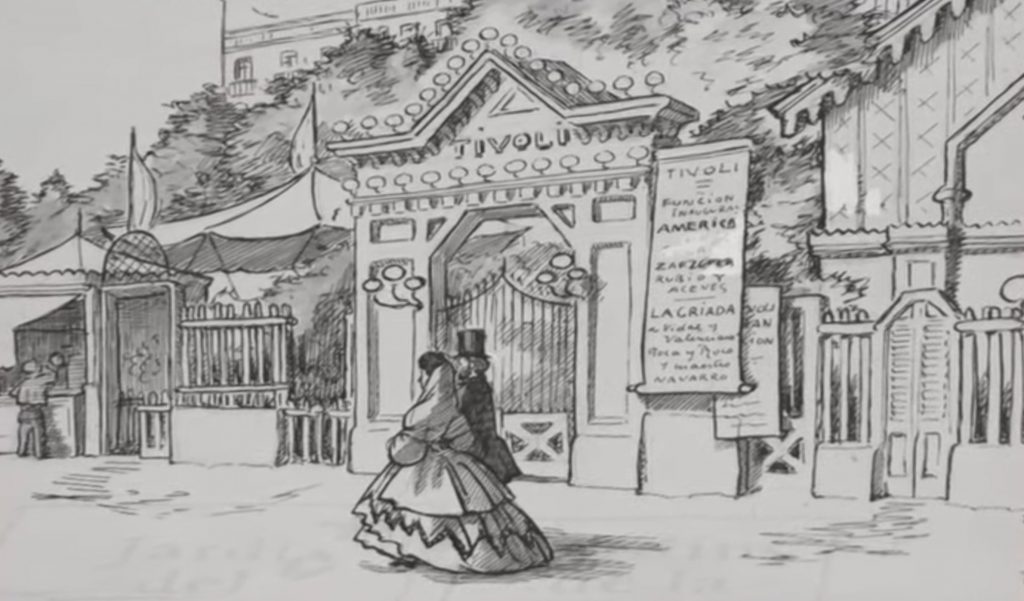
Source: https://www.youtube.com/watch?v=u_qYE7_f5gg&list=LL&index=3&ab_channel=TV3
In 1853, the Camps Elisis amusement park was built next to the promenade. The park was located in the area that today is known as the Eixample, between Passeig de Gràcia and Avinguda Diagonal, very close to where some of Gaudí’s best-known buildings are currently located, such as Casa Milà (declared a World Heritage Site by UNESCO) and Casa Batlló. This area is visited each year by millions of tourists from around the world. Camps Elisis was one of the first European parks, preceded by Denmark’s Tivoli Gardens (1843) and Dyrehavsbakken (1583), known as the oldest amusement park in the world.

Source: https://www.youtube.com/watch?v=u_qYE7_f5gg&list=LL&index=3&ab_channel=TV3
The architect Josep Oriol Mestres designed a French-inspired garden that featured three main attractions, including a roller coaster, a lagoon with small boats and a carousel. It also had some shooting gallery games, restaurants, a theater and a large dance floor, which immediately became very popular among the citizens of Barcelona. The garden was decorated with various sculptures and architectural elements inspired by Greek mythology.
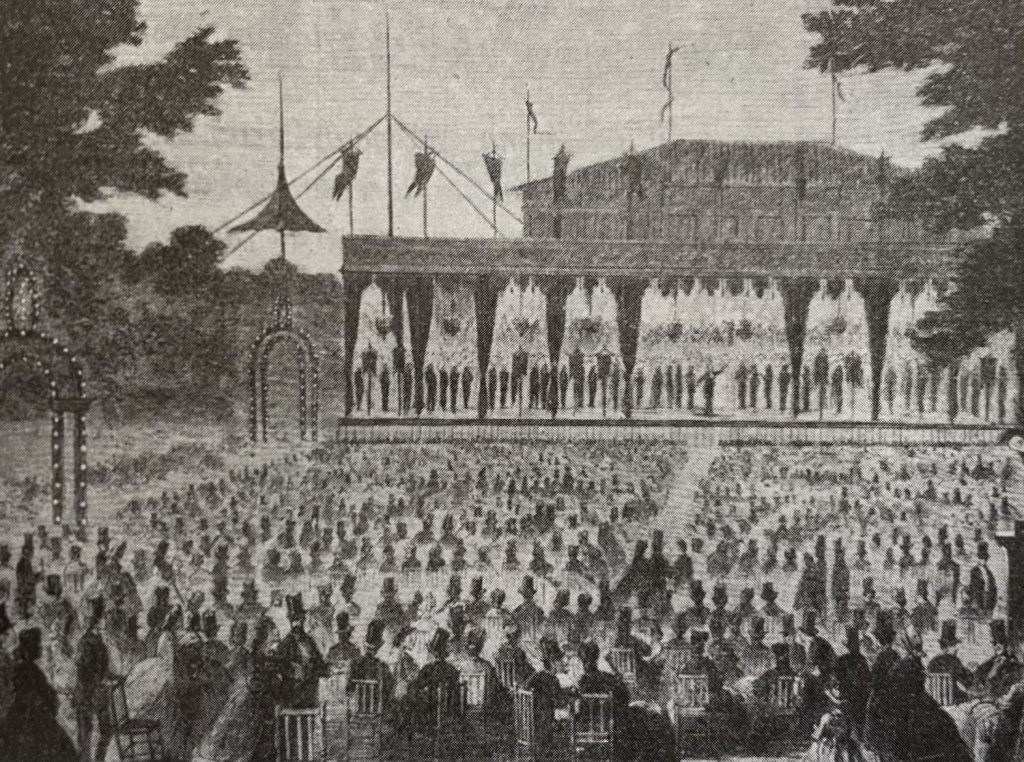
Source: Brotons, R. (2011). Parcs d’Atraccions de Barcelona (2nd ed.). Albertí.
A large wooden roller coaster was the main novelty for the citizens of Barcelona, a structure of this kind had never been seen in Spain. The roller coaster was a near clone of the Promenades Aériennes, a combination of two roller coasters built in Paris in 1817. In 1861 Camps Elisis inaugurated a great opera house aimed at Barcelona’s elite. This opera house was where the famous opera Carmen by Bizet premiered. Later, other theaters were built in the area and Camps Elisis lost some popularity.

Source: https://es.wikipedia.org/wiki/Archivo:Camps_Elisis_Passeig_Gr%C3%A0cia.jpg
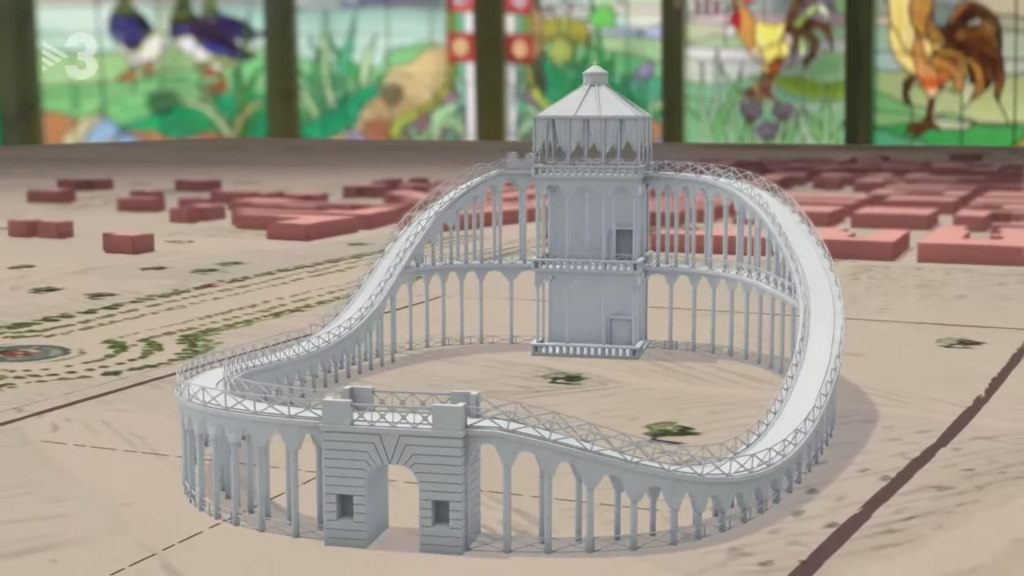
Source: https://www.youtube.com/watch?v=u_qYE7_f5gg&list=LL&index=3&ab_channel=TV3
Eventually the real estate speculation produced by Pla Cerdà and the construction of l’Eixample, brought the first Spanish amusement park’s history come to an end. Today a street named Passatge dels Camps Elisis is the only memory of the park that remains.
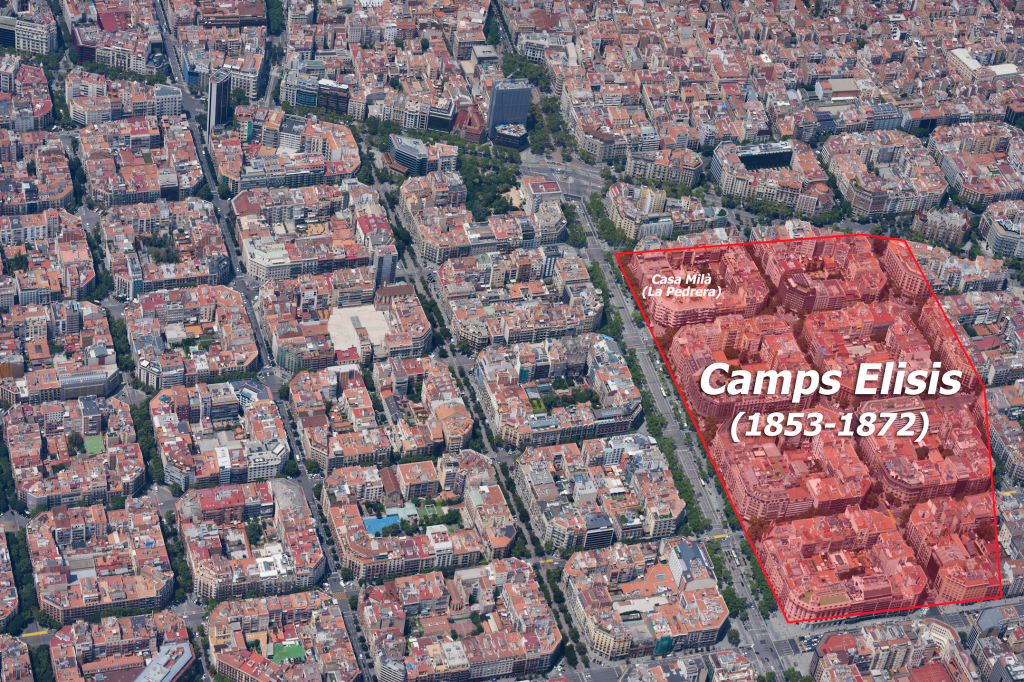
Image courtesy of Innoviland Solutions, SL | Edition: European Coaster Kings
Sources used for this article:
Ajuntament de Barcelona. (n.d.). La Barcelona Enmurallada. Any Cerdà. http://www.anycerda.org/web/es/any-cerda/fa-150-anys/resum
BARCELONAUTA, M. (2015, November 21). ELS CAMPS ELISIS (1855-1873). Barcelofilia. http://barcelofilia.blogspot.com/2015/11/els-camps-elisis-1855-1873.html
Brotons, R. (2011). Parcs d’Atraccions de Barcelona (2nd ed.). Albertí.
Corporació Catalana de Mitjans Audiovisuals. (2020, February 13). Passeig de Gràcia, l’escenari burgès – Sense Ficció [Video]. YouTube. https://www.youtube.com/watch?v=u_qYE7_f5gg&list=LL&index=3&ab_channel=TV3
Cortijo, D. (2019, October 20). Els Camps Elisis: el record d’un parc d’atraccions desaparegut. Nació Digital. https://www.naciodigital.cat/noticia/189495/camps-elisis-record-parc-atraccions-desaparegut
Wikipedia. (n.d.). List of amusement parks. https://en.wikipedia.org/wiki/List_of_amusement_parks


